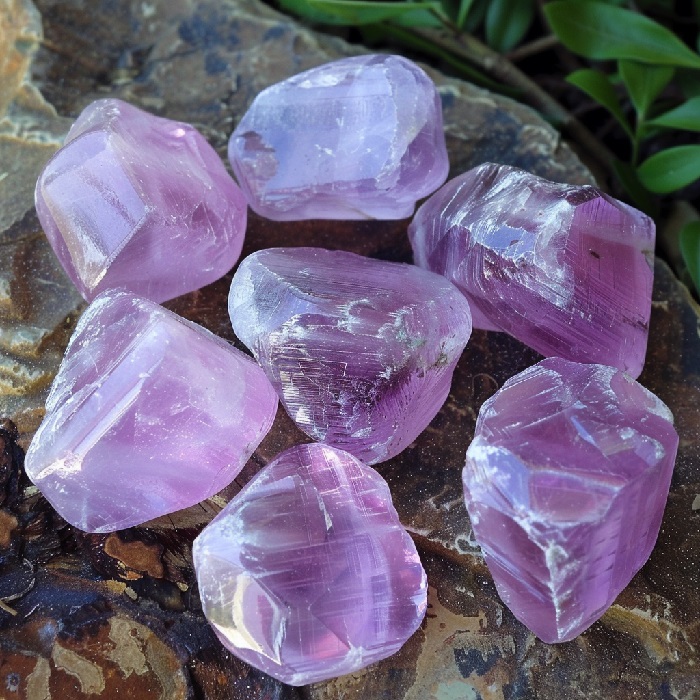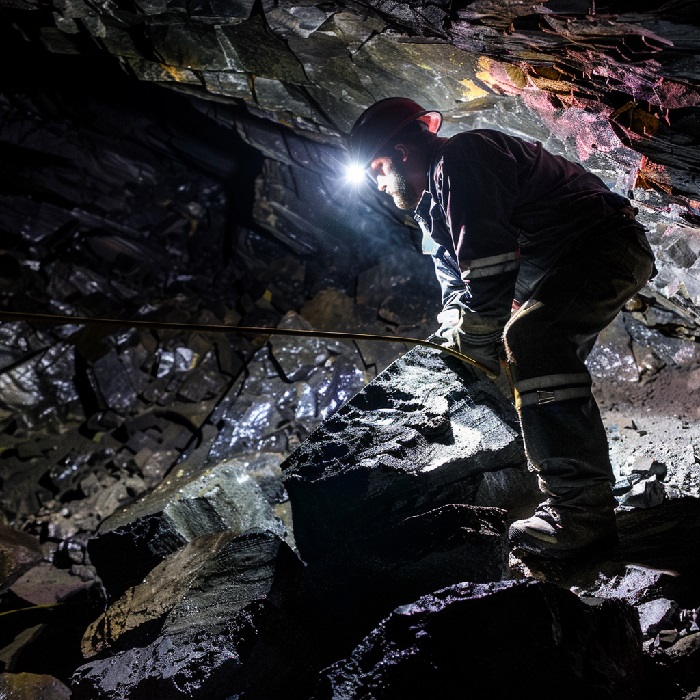Kunzite Mining
DESCRIPTION:
The precious stones hold significant importance in the lives of individuals worldwide. Each year, new gems enter the market, bringing with them new names. One such gem, Kunzite, also known as the "young gemstone," has gained prominence in the global jewelry market. It owes its name to the renowned gemologist George Frederick Kunz, who first described it after its discovery in California. Kunzite is also found in Brazil, Madagascar, Pakistan, and Afghanistan.
This gemstone typically exhibits a pink hue, with variations that include shades of violet, lilac, yellow, and green. The yellow variety is known as Triphane, while the green variety is called Hiddenite. The darker shades of Kunzite are more highly valued. Heating methods are sometimes employed to enhance the stone's color and beauty, although prolonged exposure to direct sunlight can cause it to fade. Notably, Kunzite displays a wide range of colors when viewed from different angles.
Kunzite is predominantly favored by women, primarily due to its pink coloration. It is believed to offer numerous benefits, such as calming young mothers and babies. It is said to alleviate nervousness during exams, mental distress following a breakup, and other negative emotions. Kunzite is also believed to protect against evil spirits and negative energies.
Careful cutting is essential for Kunzite due to its delicate nature; improper cutting can lead to chipping or damage. It is commonly used to adorn pendants and decorative objects, as it is challenging to find small Kunzite stones suitable for rings and necklaces. The gem is typically worn in the evenings to protect it from sunlight, and its abundant deposits keep its price relatively affordable.
Combining Kunzite with other gemstones is believed to amplify the body's positive vibrations. Additionally, Kunzite is credited with healing properties. Despite these positive attributes, its fragile nature requires careful handling during cutting and jewelry use. Professional cleaning is recommended to avoid damaging the gemstone.
Kunzite's exceptional qualities have earned it a prominent place among gemstones, yet there may still be undiscovered qualities waiting to be revealed to the world.
FORMATION:
Kunzite forms through geological processes occurring deep within the Earth's crust. Typically found in pegmatite veins—coarse-grained igneous rocks rich in minerals—the formation of Kunzite follows these steps:
Magmatic Intrusion
Magma, molten rock containing various minerals, rises towards the Earth's surface, intruding into existing rock formations like granite or gneiss.
Pegmatite Formation
Upon slow cooling and solidification of the magma, pegmatites are formed. These rocks are known for their large crystal sizes and are found in the final stages of magma crystallization. Pegmatite pockets contain rich fluids with high concentrations of elements crucial for Kunzite formation, such as lithium, aluminum, and silicon.
Mineral Precipitation
As the pegmatite cools further, minerals begin to crystallize. Spodumene, the mineral precursor to Kunzite, forms under specific temperature and pressure conditions. The incorporation of trace amounts of manganese into spodumene's crystal structure results in Kunzite's characteristic pink to lavender coloration.
MINING AND PROCESSING:
Traditional Mining Techniques for Kunzite
In the realm of Kunzite, the journey from deep within the Earth to becoming a dazzling gemstone begins with time-honored mining techniques. Passed down through generations, these methods empower miners to uncover the hidden treasures of Kunzite. With steadfast dedication and expertise, they embark on an exhilarating quest to unearth this extraordinary gem.
Guided by their profound knowledge of geological formations, miners venture into rugged terrains and remote regions known to harbor Kunzite. Armed with fundamental tools like picks, shovels, and hammers, they meticulously extract gem-bearing rocks from the Earth's embrace. These rocks are then transported to processing areas where the meticulous sorting process begins.
With experienced eyes, miners meticulously separate precious Kunzite crystals from surrounding rocks and minerals. This delicate task demands patience and precision as each gemstone is scrutinized for its exceptional beauty and quality. Through their skillful hands, they reveal the true essence of Kunzite, bringing its captivating allure to light.
Modern Mining Practices and Sustainability
Technological advancements have revolutionized Kunzite mining, enhancing efficiency and sustainability. Modern practices blend cutting-edge techniques with a commitment to environmental protection and the longevity of Kunzite extraction.
State-of-the-art machinery like excavators, loaders, and conveyor systems have become invaluable in modern mining. These tools enable efficient extraction, boosting productivity while reducing physical strain on miners. They allow for precise operations, optimizing gemstone recovery rates and ensuring only the highest quality Kunzite reaches the market.
Sustainability is a cornerstone of modern mining practices. Companies integrate responsible environmental stewardship into their operations with reclamation plans to restore mined areas to their natural state. Efforts focus on minimizing waste, conserving water, and reducing energy consumption, lessening the ecological footprint of Kunzite mining.
PHYSICAL PROPERTIES:
|
Chemical Formula |
LiAlSi2O6 |
|
Color |
Pink, Purple |
|
Hardness |
6.5 - 7 |
|
Crystal System |
Monoclinic |
|
Refractive Index |
1.66 - 1.68 |
|
SG |
3.1 - 3.2 |
|
Transparency |
Transparent |
|
Double Refraction |
.015 |
|
Luster |
Vitreous |
|
Cleavage |
1,2 - prismatic |
|
Mineral Class |
Spodumene |
QUALITY FACTORS:
Color
The color of Kunzite is its most crucial value determinant. Higher value is attributed to stones with more vivid colors.
Clarity
Kunzite typically exhibits high clarity, and any inclusions that affect its transparency can diminish the gem's value.
Cut
Despite the challenges posed by its two cleavage directions, skilled cutters can enhance kunzite's beauty effectively.
Carat Weight
It is common to discover kunzite in large sizes, such as this impressive specimen weighing 648.10 carats.
NATURAL OCCURRENCE:
















